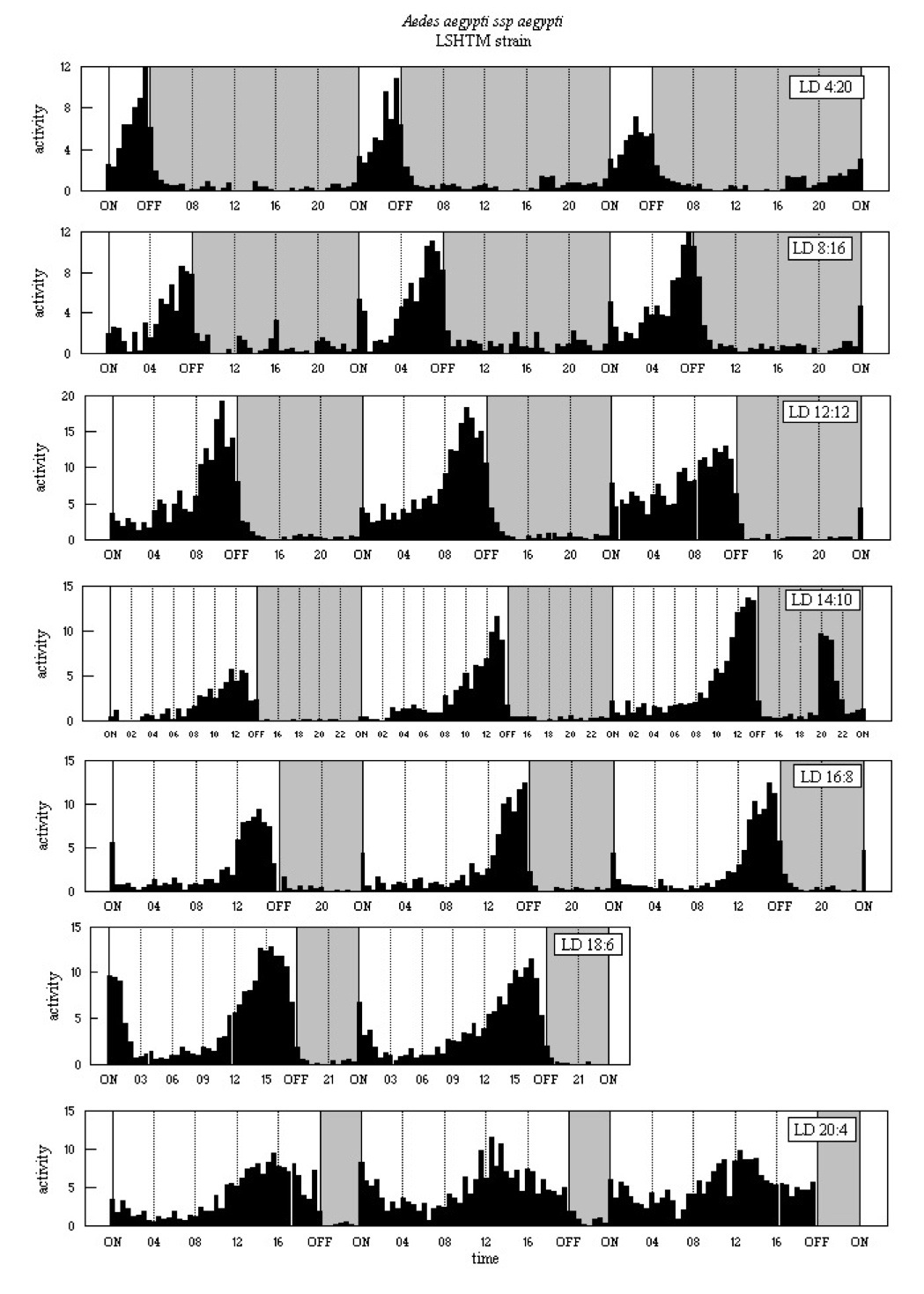

Biological Clocks in Mosquitoes
|
Experimental regimes
LD 4:20, nine females, studied from 5-6 days post-emergence (4-5
May 1968). Recorded in LD 12:12 on day three then light-on delayed 8h
to give LD 4:20 for days four to eight.
LD 8:16, eight females, studied from 6-7 days post-emergence
(21-22 November 1967). Recorded in LD 12:12 on day two then light-on
delayed 4h to give LD 8:16 for days three to seven.
LD 12:12, six females, studied from 1-2 days post-emergence
(20-21 December 1967). Recorded for days six to nine.
LD 14:10 to LD 18:6, nine females, studied from 5-6 days
post-emergence (23-24 October 1968). Recorded in LD 14:10 for days two
to four then light-on advanced 4h to give LD 18:6 for days five and six.
LD 16:8, eight females, studied from 6-7 days post-emergence
(14-15 November 1967). Recorded in LD 12:12 on day three then light-on
advanced 4h to give LD 16:8 for days four to seven.
LD 20:4, nine females, studied from 5-6 days post-emergence
(26-27 April 1968). Recorded in LD 12:12 on day three then light-on
advanced 8h to give LD 20:4 for days four to seven.
Results
The activity patterns are shown in Figure A1 below. The pattern in all
seven LD regimes is dominated by the E' peak. Very little
activity follows in the subjective night, and there is a small,
variable, M peak which is rather more pronounced when L = 16h
or longer. It is clear that when L > 16h or more the E' peak
falls progressively earlier as L increases, coming some 13-14h after
light-on.
Figure A1

|
©1998, 2010 - Brian Taylor CBiol FSB FRES 11, Grazingfield, Wilford, Nottingham, NG11 7FN, U.K. Comments to dr.b.taylor@ntlworld.com |